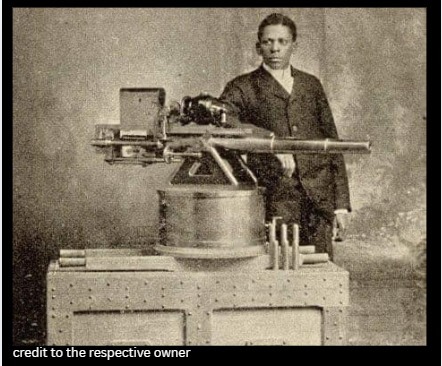In 1900, Chicago’s streets buzzed with industry and invention. Among those quietly hustling was Eugene Burkins—a man who had learned to read and write, polished shoes, and witnessed the world changing around him. Despite having almost no formal education, he believed he could improve how big guns worked.
Burkins designed a mechanism to load heavy ammunition more quickly into large cannons—not quite what we think of as a machine gun, but definitely a bold and clever step forward in firearm technology. He filed U.S. Patent No. 649,433 for a breech-loading cannon that used rollers and a vertical magazine to speed up ammunition feeding.
There is little concrete evidence that his invention was ever mass-produced or that he secured contracts. Whether due to lack of money, connections, or the color of his skin, the doors remained closed to him. He remains a little-known figure in most history books. But what endures is the spark: a man’s belief that ingenuity should not be limited by birth or social standing.
His story isn’t just one of tragedy—it’s one of possibility. It reminds us that history is filled with people whose contributions went unrecognized, whose names faded, but whose ideas were real. It challenges us to reconsider who we credit, who we remember, and how many stories remain lost in silence.
